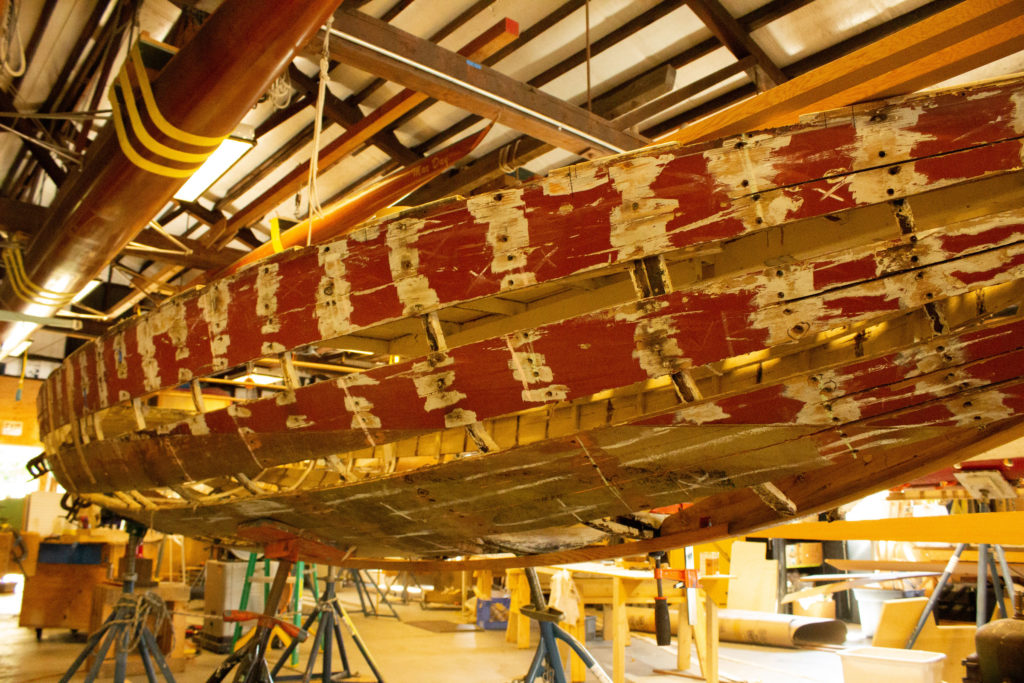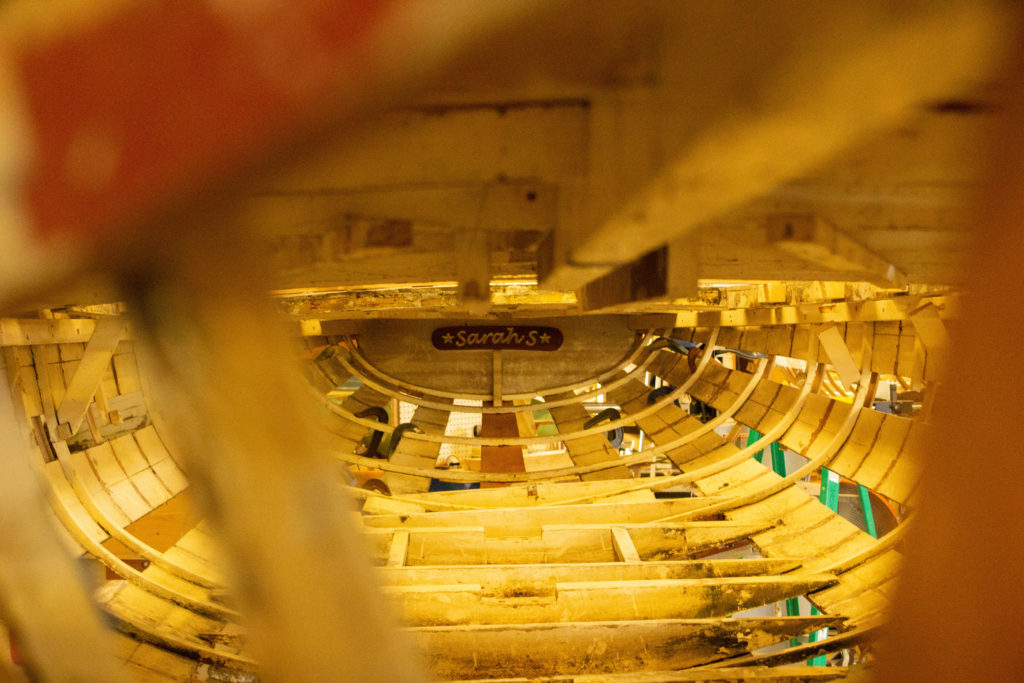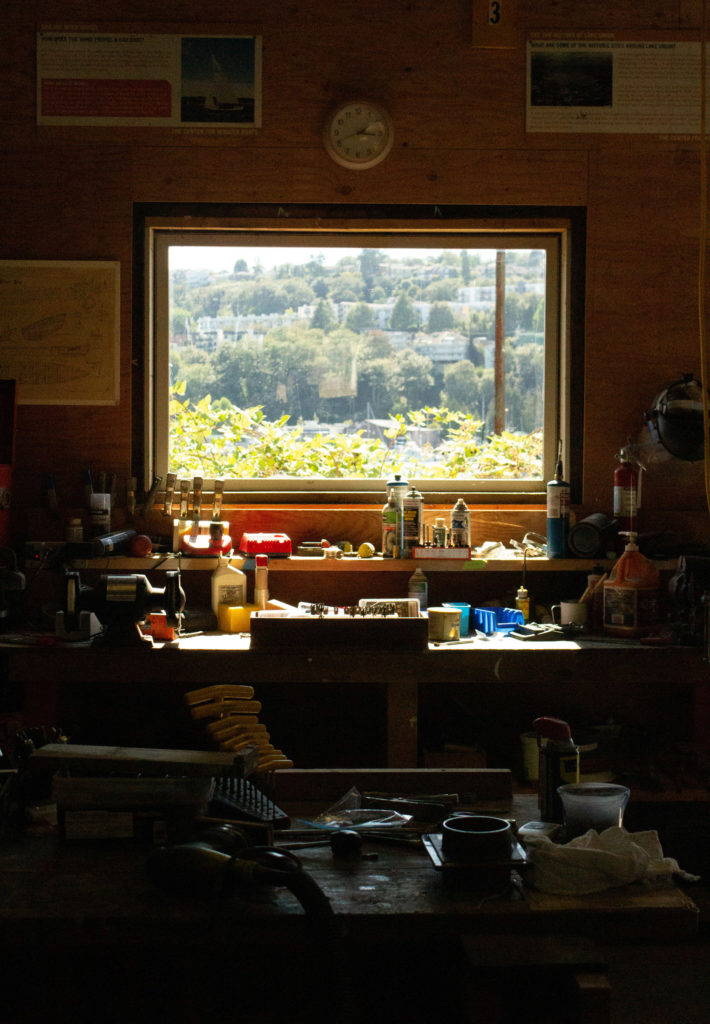
Interview by Kate Calamusa / Photos Courtesy of Center for Wooden Boats
The Center is restoring these three small sloops, built right here in Seattle during the Depression, for its fleet. How did you personally get involved with this project and in boat building?
My first introduction to the Center was actually as a tenant [at the North Lake boatshop]. I had a Dragon Class sailboat that I was going to restore and rented space to do so. It really wasn’t much of a shop when I started, but as I brought in tools and started working, it became more of a working shop. Josh Anderson [CWB executive director] took notice and asked me if I’d like a job as a boatwright working to restore some of their old fleet…and I gladly accepted. My work on boats stems from my background, which is in fact in carpentry; I was a general contractor for about 25 years. About 10 years ago though, I stepped back from houses, looking for something more interesting. I wanted to get back to really building again, putting the tools back in my hand, working with wood. I started reading about boats and wooden boats, then started buying up my own projects to work on. It all started falling into place from there.
What kind of shape were the vessels in when you started? And why did you decide to work on all three simultaneously rather than one at a time?
The Center had been wanting to do some maintenance on these Blanchards for some time, and we really didn’t know how much work they needed until we started to pull them apart. We thought about doing them in a series, one at a time, but then realized that we were most likely going to be making similar fixes with similar tools and that it would be easier to do them simultaneously. This is where the volunteers were critical— they worked to carefully pull the boats apart without losing their shape. Once we did so, we realized the work was going to be far more extensive than we thought as they all needed fixes to structural components. In the end it will probably take 6 to 8 months per boat. We’re still in the middle of the restoration at this point. We’ve replaced the “back bones”, so to speak; there’s a new keel, stem, a forefoot among the three. One needed a new transom, which I always think of as the spine of the boat. There isn’t a part of it that isn’t endlessly challenging, but there also isn’t a part of it that isn’t endlessly fun.
Did any fun details emerge as you were pulling them apart?
There was a surprising find within one boat! After we pulled off the decking and got a look at the interior of the hull, we noticed that someone had mounted an old name plate on the inside of the transom—she was Sarah S at some point in her history. It’s kind of a mystery of when she was known under that name, and a cool detail that will definitely stay with the boat.
What challenges have presented themselves during the restoration?
Wood itself is obviously quite important when it comes to these old boats and we’ve had challenges sourcing the right wood. I ended up going down to a mill in Oregon to source the white oak we needed [for framing] and was able to have them mill the right cuts. Another challenging, but really satisfying, project was lamination process of the yellow cedar we used on the decking. These pieces go across the beam of the boat and hold up the deck, and as you go fore and aft, they don’t sit perfectly straight, and are instead curved. Normally you would use arched wood, but we had some great Alaskan cedar in the shop and thought to cut those into strips and then clamp them to the form to get the same effect. It’s a little more laborious than using an arched piece, but actually in the end you ended up getting a stronger beam out of it, and the layers of epoxy that are applied help make it even more water tight.
Tell me about the vibe inside the boatshop: What draws people to volunteer? Why do you love it?
We get a whole range of people with different skill sets in the shop; some have carpentry skills, some do not. But the common thread is that everyone here is really into these boats. They’ve sailed them, they want to play a part in restoring them. And they have such a willingness to do anything that needs to be done; they’ll get in there, lay on the ground to make fixes, strip paint. Really everyone involved with CWB is united by a love of wooden boats and their history. And for me, personally, I love wood. I just love the properties of the different species, how each kind is best suited to a particular use or type of cut. You have to know a lot about the wood you are using, and that knowledge is fun to have. Wood has such a practical function in a boat, it’s a living organism that continues out at sea. These boats have a real heart and soul and bringing them back to life is very fun.
ABOUT THE EXPERT: Tom Jacobs and the team in the North Lake Boatshop expect to have the three Blanchards ready to set sail in spring 2023, when they will rejoin the growing CWB fleet. For more details on the project, visit: cwb.org.

